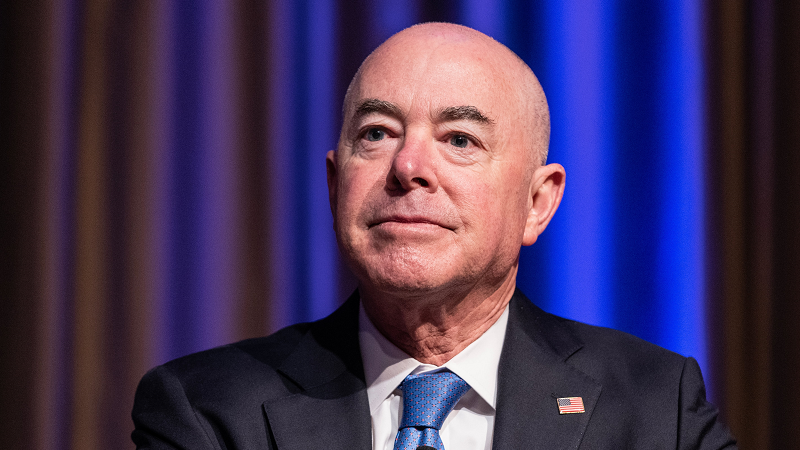
With lawmakers and stakeholders working together to develop AI guardrails, Department of Homeland Security (DHS) Secretary Alejandro Mayorkas said today that he believes “we are on the right path of a public-private partnership” in AI development.
During the Axios’ AI+ Summit on Nov. 28, Mayorkas said a partnership in AI can help to ensure the technology is used for public good while avoiding its downfalls.
“In my discussions with companies that are in the business of the development of AI and its advancement, I have certainly seen just quite immediately, a social consciousness – an understanding of its potential to do great, an understanding of the risks involved, and a very significant desire to advance one and to manage the other,” said Mayorkas. “I think a public-private partnership is the key.”
Mayorkas also discussed the importance of developing DHS’s own AI capabilities, noting a “need for speed” to process data that AI can use to facilitate trade and travel at U.S. ports of entry.
“The collection, and more importantly, the analysis of information can be very time consuming, but we have a responsibility to facilitate lawful trade and travel,” he said. “There’s a tremendous amount of legal trade and travel coming through our ports of entry, and so the faster that we can make decisions, the faster we can identify anomalies.”
Some of the current use cases of the technology include finding anomalies in the travel patterns of trucks that are suspected of trafficking fentanyl.
“Our Office of Field Operations at U.S. Customs and Border Protection is using AI to detect unusual travel patterns of vehicles crossing the border, and in 1.4 seconds, we identified an anomaly of a particular truck that ended up having about 75 kilograms of narcotics in it. So, that that type of machine learning was extraordinarily useful in the border context,” stated Mayorkas.
Additionally, Mayorkas noted that the agency is also looking at using AI for a “wide array of fields” that it has yet to explore.
“The one that comes immediately to mind where we are just starting is in the context of extreme weather events, and the ability to analyze patterns in weather developments where we can have greater predictive capabilities of where wildfires for example, can occur in certain environments, where sensors right now are moving more slowly than we would want them to,” he said.
